The electric vehicle market is becoming increasingly competitive, with manufacturers vying for consumer attention by offering advanced technology, impressive range, and innovative features. Two notable contenders in the EV SUV segment are the Ford Explorer EV and Nissan Ariya. Both vehicles bring unique characteristics and capabilities to the table, but which one stands out? In this comparison, we’ll delve into their technical specifications, innovations, and overall performance.
Ford Explorer EV vs Nissan Ariya – Performance, range & efficiency compared
Compare performance, boot capacity, efficiency and price at a glance.
Find out which car is the better choice for you – Ford Explorer EV or Nissan Ariya?
Design and Dimensions
Starting with the dimensions, the Ford Explorer EV measures 4,468 mm in length, 1,871 mm in width, and has a height ranging between 1,630 mm and 1,639 mm. In contrast, the Nissan Ariya is slightly larger, boasting a length of 4,595 mm, a width of 1,850 mm, and a height of 1,650 mm. The exterior aesthetics of both SUVs reflect modern design philosophies, with the Ford emphasizing a rugged, muscular look while the Nissan leans towards a sleek, futuristic appeal.
Power and Performance
Performance metrics are crucial for potential buyers evaluating an electric SUV. The Ford Explorer EV offers a range of power outputs with options of 286 HP, 340 HP, and 170 HP, allowing buyers to choose based on their performance preferences. It's available in both rear-wheel drive and all-wheel drive configurations, providing flexibility and enhanced traction when required.
On the other hand, the Nissan Ariya comes with multiple powertrain options as well, ranging from 218 HP to 435 HP. With a choice between front-wheel drive and all-wheel drive, the Ariya offers a robust driving experience, especially with its highest output version, which can accelerate from 0-100 km/h in an impressive 5 seconds.
Battery Capacity and Electric Range
Battery capacity plays a significant role in determining the range and convenience of electric vehicles. The Ford Explorer EV offers a battery capacity of up to 79 kWh, translating to an impressive electric range of up to 602 km on a single charge, making it one of the most robust options in terms of distance.
The Nissan Ariya, while also commendable, offers a maximum battery capacity of 87 kWh, providing a range of up to 531 km. While the numbers favor the Ford, the Ariya's capacity still delivers a decent range that can meet the needs of most daily commuters.
Charging Efficiency
Charging efficiency is vital for EV owners. The Ford Explorer EV's consumption ranges between 13.9 to 16.6 kWh/100km depending on the configuration, which is relatively efficient for its size and power. The Ariya's consumption is slightly higher, with rates between 17.7 to 24.5 kWh/100km, which means while it may need more power to travel the same distance, it does offer fast charging capabilities that can reduce downtime significantly.
Interior and Technology
Within the cabins, both vehicles prioritize comfort and technology. The Ford Explorer EV seats five passengers comfortably and features a spacious trunk capacity of 450 to 445 liters. It integrates advanced tech, which includes driver assistance systems and modern infotainment features that enhance the driving experience.
The Nissan Ariya also seats five, but offers a slightly larger trunk with a capacity of 468 liters. It boasts a cutting-edge interior with a minimalist aesthetic, showcasing dual touchscreen displays for infotainment and instrument control, providing an intuitive user experience that resonates well with tech-savvy drivers.
Conclusion
When pitting the Ford Explorer EV against the Nissan Ariya, it’s evident that both vehicles excel in various areas. The Ford Explorer EV takes the lead in electric range and efficiency, making it a formidable choice for those who prioritize long-distance travel without frequent charging. On the other hand, the Nissan Ariya’s advanced technology, design, and range of powertrain options make it an attractive option for buyers looking for cutting-edge features and a sporty drive.
Ultimately, the choice between these two electric SUVs comes down to individual preferences, lifestyle needs, and brand loyalty. With electric mobility rapidly evolving, both the Ford Explorer EV and Nissan Ariya represent exciting choices in the burgeoning world of electric vehicles.
Here’s where it gets real: The technical differences in detail
Costs and Efficiency:
Looking at overall running costs, both models reveal some interesting differences in everyday economy.
Ford Explorer EV has a barely noticeable advantage in terms of price – it starts at 34200 £, while the Nissan Ariya costs 37300 £. That’s a price difference of around 3077 £.
In terms of energy consumption, the advantage goes to the Ford Explorer EV: with 14.50 kWh per 100 km, it’s distinct more efficient than the Nissan Ariya with 17.70 kWh. That’s a difference of about 3.20 kWh.
As for range, the Ford Explorer EV performs somewhat better – achieving up to 602 km, about 71 km more than the Nissan Ariya.
Engine and Performance:
Power, torque and acceleration say a lot about how a car feels on the road. This is where you see which model delivers more driving dynamics.
When it comes to engine power, the Nissan Ariya has a evident edge – offering 435 HP compared to 340 HP. That’s roughly 95 HP more horsepower.
In acceleration from 0 to 100 km/h, the Nissan Ariya is hardly perceptible quicker – completing the sprint in 5 s, while the Ford Explorer EV takes 5.30 s. That’s about 0.30 s faster.
In terms of top speed, the Nissan Ariya performs barely noticeable better – reaching 200 km/h, while the Ford Explorer EV tops out at 180 km/h. The difference is around 20 km/h.
There’s also a difference in torque: Ford Explorer EV pulls somewhat stronger with 679 Nm compared to 600 Nm. That’s about 79 Nm difference.
Space and Everyday Use:
Cabin size, boot volume and payload all play a role in everyday practicality. Here, comfort and flexibility make the difference.
Both vehicles offer seating for 5 people.
In curb weight, Ford Explorer EV is barely noticeable lighter – 1908 kg compared to 1980 kg. The difference is around 72 kg.
In terms of boot space, the Nissan Ariya offers barely noticeable more room – 468 L compared to 450 L. That’s a difference of about 18 L.
In maximum load capacity, the Ford Explorer EV performs barely noticeable better – up to 1422 L, which is about 72 L more than the Nissan Ariya.
When it comes to payload, Ford Explorer EV distinct takes the win – 585 kg compared to 420 kg. That’s a difference of about 165 kg.
Who wins the race?
The Ford Explorer EV proves to be barely ahead and therefore becomes our DriveDuel Champion!
Ford Explorer EV is the better all-rounder in this comparison.
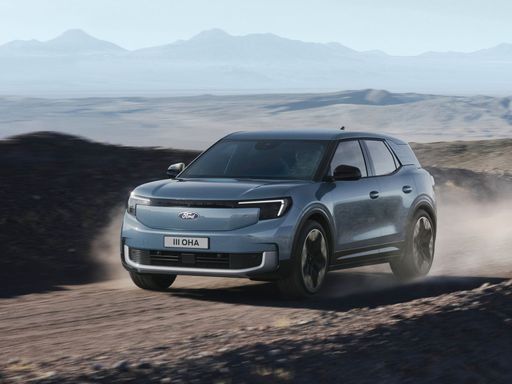 @ Ford Motor Company / Ford Media Center
@ Ford Motor Company / Ford Media Center
Ford Explorer EV
Ford Explorer EV
The Ford Explorer EV marks a significant step forward in the brand's journey towards electrification, offering an impressive blend of performance and sustainability. This modern SUV features a sleek design complemented by advanced technology that enhances the driving experience. With a focus on comfort and innovation, the Explorer EV aims to redefine family travel for the electric age.
details @ Ford Motor Company / Ford Media Center
@ Ford Motor Company / Ford Media Center
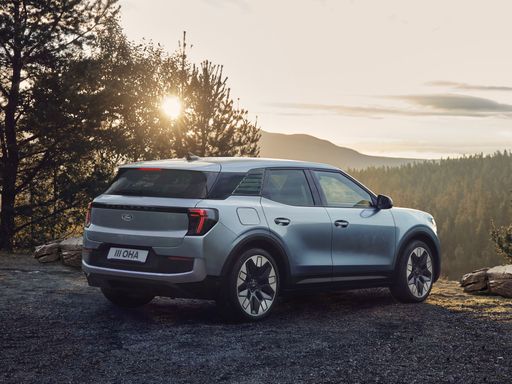 @ Ford Motor Company / Ford Media Center
@ Ford Motor Company / Ford Media Center
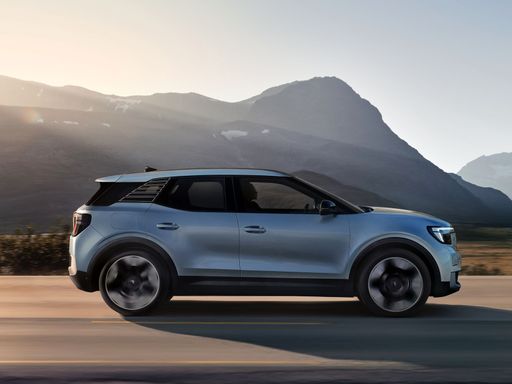 @ Ford Motor Company / Ford Media Center
@ Ford Motor Company / Ford Media Center
Nissan Ariya
The Nissan Ariya elevates the electric vehicle segment with its sleek design and advanced technology, providing a modern driving experience. Seamlessly blending comfort with performance, the Ariya offers an inviting and spacious interior that caters to both driver and passengers. Its innovative features make it a strong contender in the growing market for eco-friendly yet stylish automobiles.
details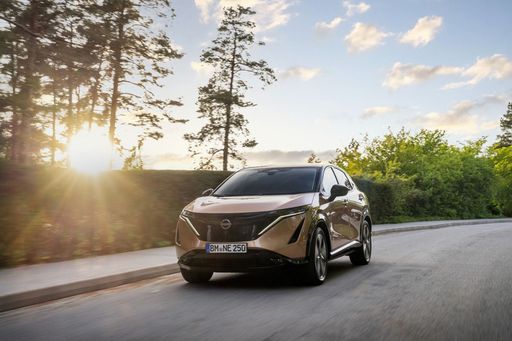 @ Nissan Motor Corporation
@ Nissan Motor Corporation
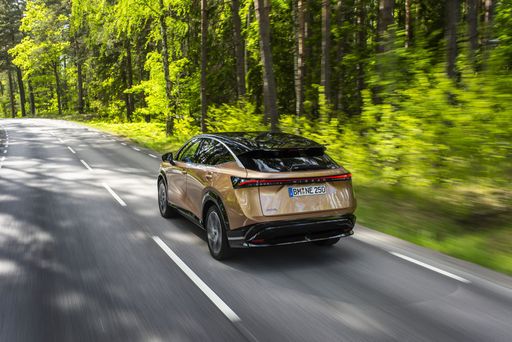 @ Nissan Motor Corporation
@ Nissan Motor Corporation
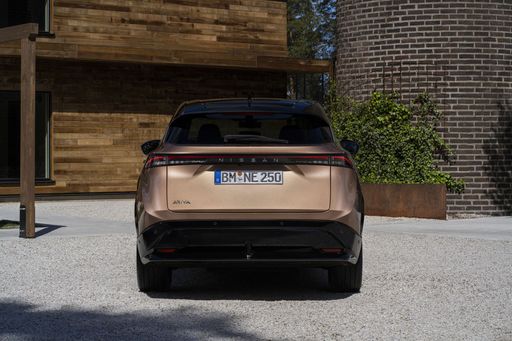 @ Nissan Motor Corporation
@ Nissan Motor Corporation
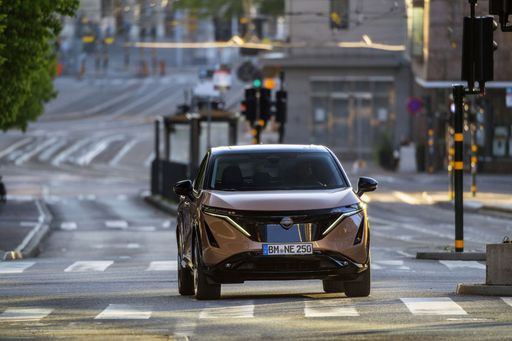 @ Nissan Motor Corporation
@ Nissan Motor Corporation
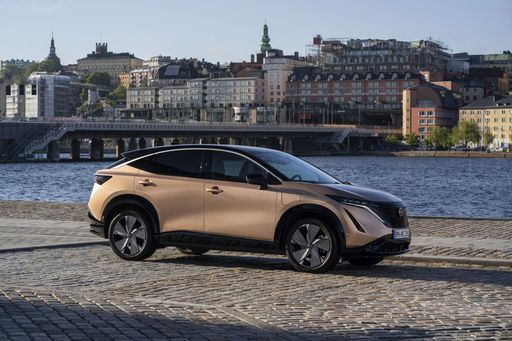 @ Nissan Motor Corporation
@ Nissan Motor Corporation
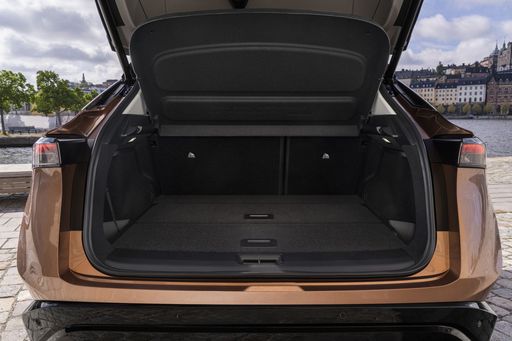 @ Nissan Motor Corporation
@ Nissan Motor Corporation
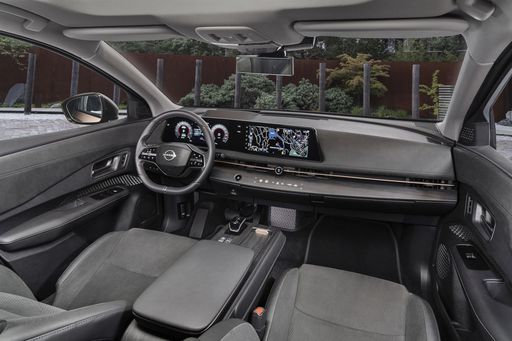 @ Nissan Motor Corporation
@ Nissan Motor Corporation
 @ Ford Motor Company / Ford Media Center
@ Ford Motor Company / Ford Media Center
|
 @ Nissan Motor Corporation
@ Nissan Motor Corporation
|
|
|
|
Costs and Consumption |
|
|---|---|
|
Price
34200 - 48800 £
|
Price
37300 - 54800 £
|
|
Consumption L/100km
-
|
Consumption L/100km
-
|
|
Consumption kWh/100km
14.5 - 17.2 kWh
|
Consumption kWh/100km
17.7 - 24.5 kWh
|
|
Electric Range
360 - 602 km
|
Electric Range
402 - 531 km
|
|
Battery Capacity
52 - 79 kWh
|
Battery Capacity
63 - 87 kWh
|
|
co2
0 g/km
|
co2
0 g/km
|
|
Fuel tank capacity
-
|
Fuel tank capacity
-
|
Dimensions and Body |
|
|---|---|
|
Body Type
SUV
|
Body Type
SUV
|
|
Seats
5
|
Seats
5
|
|
Doors
5
|
Doors
5
|
|
Curb weight
1908 - 2179 kg
|
Curb weight
1980 - 2259 kg
|
|
Trunk capacity
445 - 450 L
|
Trunk capacity
415 - 468 L
|
|
Length
4468 mm
|
Length
4595 mm
|
|
Width
1871 mm
|
Width
1850 mm
|
|
Height
1630 - 1639 mm
|
Height
1650 mm
|
|
Max trunk capacity
1417 - 1422 L
|
Max trunk capacity
1280 - 1350 L
|
|
Payload
561 - 585 kg
|
Payload
396 - 420 kg
|
Engine and Performance |
|
|---|---|
|
Engine Type
Electric
|
Engine Type
Electric
|
|
Transmission
Automatic
|
Transmission
Automatic
|
|
Transmission Detail
Reduction Gearbox
|
Transmission Detail
Reduction Gearbox
|
|
Drive Type
Rear-Wheel Drive, All-Wheel Drive
|
Drive Type
Front-Wheel Drive, All-Wheel Drive
|
|
Power HP
170 - 340 HP
|
Power HP
218 - 435 HP
|
|
Acceleration 0-100km/h
5.3 - 8.7 s
|
Acceleration 0-100km/h
5 - 7.6 s
|
|
Max Speed
160 - 180 km/h
|
Max Speed
160 - 200 km/h
|
|
Torque
310 - 679 Nm
|
Torque
300 - 600 Nm
|
|
Number of Cylinders
-
|
Number of Cylinders
-
|
|
Power kW
125 - 250 kW
|
Power kW
160 - 320 kW
|
|
Engine capacity
-
|
Engine capacity
-
|
General |
|
|---|---|
|
Model Year
2024 - 2025
|
Model Year
2022 - 2025
|
|
CO2 Efficiency Class
A
|
CO2 Efficiency Class
A
|
|
Brand
Ford
|
Brand
Nissan
|
What drive types are available for the Ford Explorer EV?
The Ford Explorer EV is available as Rear-Wheel Drive or All-Wheel Drive.
The prices and data displayed are estimates based on German list prices and may vary by country. This information is not legally binding.
